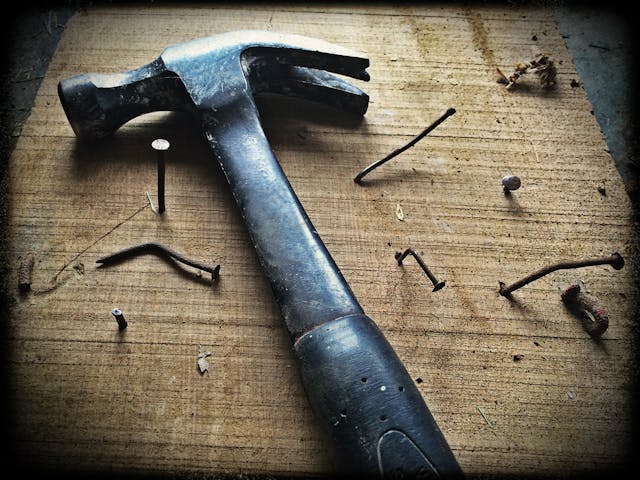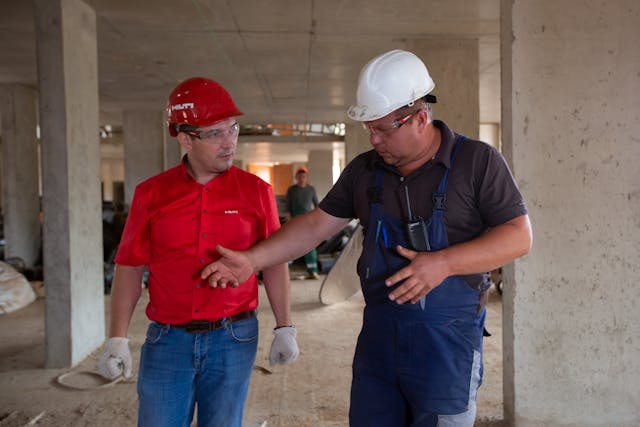
Essential Hand Tools for DIY Projects
Doing tasks yourself can be a very rewarding experience.
No matter how experienced you are as a worker or how new you are to do-it-yourself projects, you need to have the ideal hand tools. These tools not only make things easier, but they also make sure that jobs are done correctly and safely.
This article will talk about the most important hand tools that every DIY enthusiast should have.
1. Hammer

A hammer is one of the simplest things that you can't do without. It can be used to drive nails into wood, break things apart, and even do small amounts of destruction. The claw hammer is the most popular type. It has a curved claw that can pull nails out. Choose a hammer that is easy to hold and has the right amount of weight for your needs.
2. Screwdrivers
Screwdrivers are needed to put screws into different types of material and to free screws that need to be taken out. It comes in two main types: Phillips (cross-head) and flat-head (slotted). Because different jobs need different kinds of screws, it's best to have a set with a range of sizes and types.
3. Pliers
Pliers come in many sizes and shapes, and each one is made for a particular job. These are the most popular types:
-
Cutting pliers: Made to cut through wires and small nails.
-
Needle-nose pliers: This is the best tool for precise work and getting into small areas.
-
Slip-joint pliers: Flexible and easy to change, it's great for bending and gripping.
You can do a lot of different jobs with these pliers, from electrical work to regular repairs.
4. Tape Measure
For any DIY job, it's important to have accurate measurements. With a tape measure, you can accurately measure lengths, widths, and heights. It should have a strong tape that doesn't bend easily and a lock that will keep the tape in place while you measure.
5. Utility Knife
A box cutter, which is another name for a utility knife, can be used to cut things like cardboard, drywall, and plastic. One good safety feature to look for is a blade that can be pulled back. Always have extra blades on hand, since the ones you use can wear out over time.
6. Level
To make sure that your projects are straight up and down or left and right, you need a level. There are many kinds, such as laser levels and bubble levels. A simple bubble level is all you need for most do-it-yourself projects. When putting up shelves, hanging pictures, or building something that needs to be straight, this tool is a must-have.
7. Adjustable Wrench
Adjustable wrenches, also called crescent wrenches, are useful tools that can fit nuts and bolts of different sizes. This is helpful for plumbing and mechanical jobs because it gets rid of the need for multiple wrenches.
8. Hand Saw
When you don't have or can't use a power saw, a hand saw is the best way to cut wood and other things. Hand saws come in different styles. For example, the crosscut saw cuts across the grain, while the rip saw cuts with the grain. Pick the one that fits the needs of your projects.
9. Chisels
Chisels are used to cut or carve hard things, like metal, stone, or wood. They come in many shapes and sizes, and each one is made for a different kind of work. Most people who do their projects should start with a simple set of woodworking chisels.
10. Allen Wrenches (Hex Keys)
These are necessary to put together furniture and fix things that have hexagonal socket screws. Most sets come in a range of sizes so you can be sure you have the right tool for the job.
11. Clamps
You can hold things in place with clamps while you work on them. When you need an extra hand to hold something steady or glue pieces together, they come in handy. Common types that give strong, steady pressure are bar clamps and C-clamps.
12. Safety Gear

Safety gear is an important part of any DIY toolbox, even though it's not a tool itself. These are things like:
-
Dust mask or respirator: For jobs that make dust or smell bad.
-
Ear protection: When you use loud power tools.
-
Gloves: That way you can keep your hands safe from chemicals, cuts, and splinters.
-
Safety glasses: To keep dust and dirt out of your eyes.
13. Tool Box or Tool Bag
Buy a good kit or tool bag to keep all of your tools in order and easy to get to. As you work on a job, this will help you keep track of your tools and find what you need quickly.
Build Your Toolkit Wisely
For a wide range of DIY jobs, you need to have the ideal hand tools. When you're putting together your toolbox, think about the jobs you want to do and buy durable, high-quality tools. You should shop hand tools in Australia and start with basic tools like a hammer, screwdrivers, pliers, and a tape measure. As you need them, add more specialized tools.
Don't forget how important it is to wear safety gear at work to keep yourself safe. You can do almost any DIY job if you have the right tools and practice.
Trending
-
1 Jocko Willink's Inspirational Life & Net Worth
Aaqil Ashraf -
2 How Art Shapes Culture and Reflects Human Experience
Luke Fitzpatrick -
3 Meet Felix Williams and Maria Arthuer: The Parents of World Class Winger Nico Williams
Felix Yim -
4 Kai Cenat's Dad and the Enduring Public Interest
Aaqil Ashraf -
5 London Tube Stations Closed as Workers Stage Strikes
Mihir Gadhvi





Comments